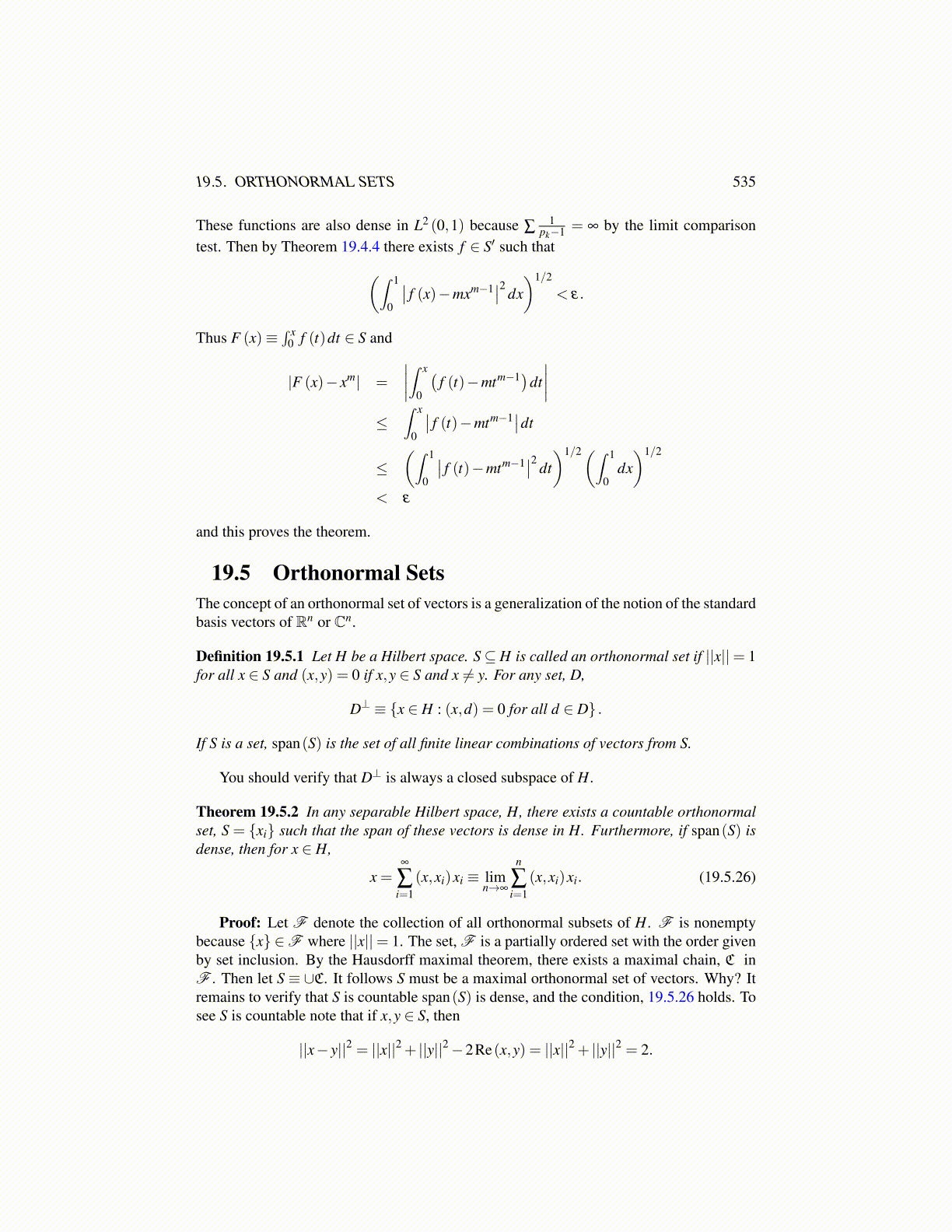
19.5. ORTHONORMAL SETS 535
These functions are also dense in L2 (0,1) because ∑1
pk−1 = ∞ by the limit comparisontest. Then by Theorem 19.4.4 there exists f ∈ S′ such that(∫ 1
0
∣∣ f (x)−mxm−1∣∣2 dx)1/2
< ε.
Thus F (x)≡∫ x
0 f (t)dt ∈ S and
|F (x)− xm| =
∣∣∣∣∫ x
0
(f (t)−mtm−1)dt
∣∣∣∣≤
∫ x
0
∣∣ f (t)−mtm−1∣∣dt
≤(∫ 1
0
∣∣ f (t)−mtm−1∣∣2 dt)1/2(∫ 1
0dx)1/2
< ε
and this proves the theorem.
19.5 Orthonormal SetsThe concept of an orthonormal set of vectors is a generalization of the notion of the standardbasis vectors of Rn or Cn.
Definition 19.5.1 Let H be a Hilbert space. S⊆H is called an orthonormal set if ||x||= 1for all x ∈ S and (x,y) = 0 if x,y ∈ S and x ̸= y. For any set, D,
D⊥ ≡ {x ∈ H : (x,d) = 0 for all d ∈ D} .
If S is a set, span(S) is the set of all finite linear combinations of vectors from S.
You should verify that D⊥ is always a closed subspace of H.
Theorem 19.5.2 In any separable Hilbert space, H, there exists a countable orthonormalset, S = {xi} such that the span of these vectors is dense in H. Furthermore, if span(S) isdense, then for x ∈ H,
x =∞
∑i=1
(x,xi)xi ≡ limn→∞
n
∑i=1
(x,xi)xi. (19.5.26)
Proof: Let F denote the collection of all orthonormal subsets of H. F is nonemptybecause {x} ∈F where ||x||= 1. The set, F is a partially ordered set with the order givenby set inclusion. By the Hausdorff maximal theorem, there exists a maximal chain, C inF . Then let S ≡ ∪C. It follows S must be a maximal orthonormal set of vectors. Why? Itremains to verify that S is countable span(S) is dense, and the condition, 19.5.26 holds. Tosee S is countable note that if x,y ∈ S, then
||x− y||2 = ||x||2 + ||y||2−2Re(x,y) = ||x||2 + ||y||2 = 2.